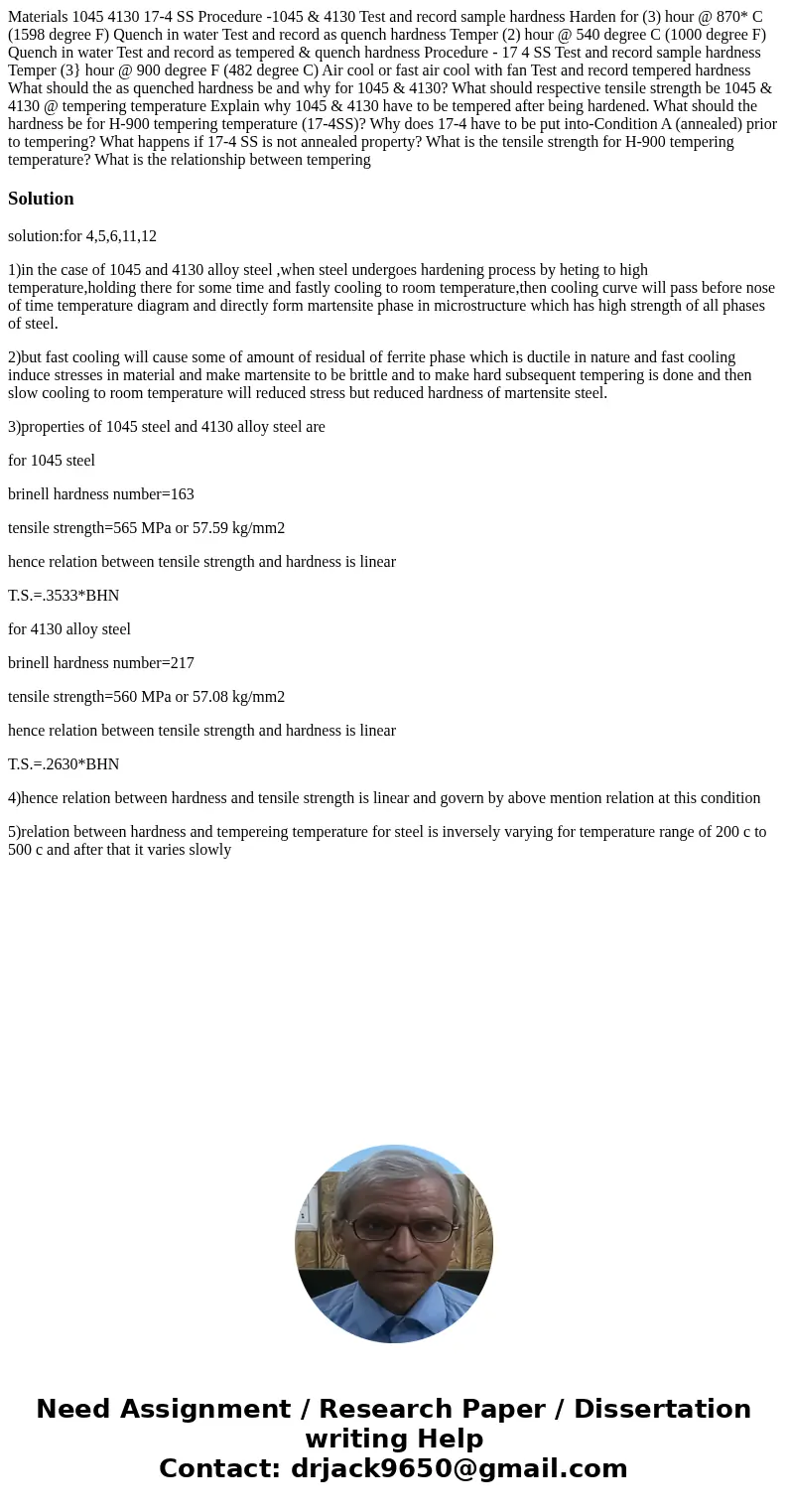Materials 1045 4130 174 SS Procedure 1045 4130 Test and rec
Solution
solution:for 4,5,6,11,12
1)in the case of 1045 and 4130 alloy steel ,when steel undergoes hardening process by heting to high temperature,holding there for some time and fastly cooling to room temperature,then cooling curve will pass before nose of time temperature diagram and directly form martensite phase in microstructure which has high strength of all phases of steel.
2)but fast cooling will cause some of amount of residual of ferrite phase which is ductile in nature and fast cooling induce stresses in material and make martensite to be brittle and to make hard subsequent tempering is done and then slow cooling to room temperature will reduced stress but reduced hardness of martensite steel.
3)properties of 1045 steel and 4130 alloy steel are
for 1045 steel
brinell hardness number=163
tensile strength=565 MPa or 57.59 kg/mm2
hence relation between tensile strength and hardness is linear
T.S.=.3533*BHN
for 4130 alloy steel
brinell hardness number=217
tensile strength=560 MPa or 57.08 kg/mm2
hence relation between tensile strength and hardness is linear
T.S.=.2630*BHN
4)hence relation between hardness and tensile strength is linear and govern by above mention relation at this condition
5)relation between hardness and tempereing temperature for steel is inversely varying for temperature range of 200 c to 500 c and after that it varies slowly

 Homework Sourse
Homework Sourse